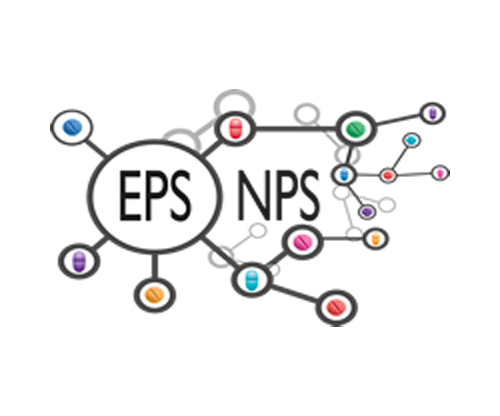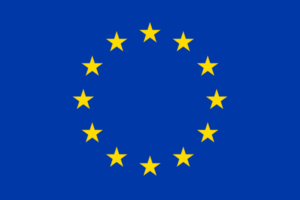Project duration: January 2015 > January 2017
Website: www.npsproject.eu

Project duration: January 2015 > January 2017
Website: www.npsproject.eu
The Project EPS/NPS – Enhancing Police Skills on Novel Psychoactive Substances is coordinated by RiSSC and developed in cooperation with University of Hertfordshire Higher Education Institution (UH) (UK), University of Szczecin (US) (PL), Eotvos University (ELTE) (HU) and INTERPOL (associate partner), with the financial support of the EU Commission
OBJECTIVES
The overall aim of the Project is to contribute at enhancing a knowledge-based joint EU approach to effectively addressing the rapid spread of NPS, by promoting a range of key-issues. These include: generation of data/knowledge, information-sharing, and cooperation.
The specific objectives of the Project are as follows:
• to scientifically identify, assess and monitor existing/emerging NPS and their online/offline supply chains on the basis of a multidisciplinary approach (e.g. criminological, sociological, chemical, clinical, forensic and legal);
• to develop operational knowledge to support the identification, legal/forensic analysis and early risk assessment of substances;
• to promote awareness, visibility, dissemination and information exchange on NPS and Project results;
• to promote networking and structural cooperation in order support/empower target groups, collect and share best practice of handling of NPS-related cases by police at local level, as well as problems related to the identification, forensic analysis and risk assessment of substances. This will allow also to develop inputs to reinforce/support the Early Warning System.
Although illicit drugs’ misuse in Europe has recently stabilised, significant changes recently occurred in the EU drugs market which the new EU Drugs Strategy (2013-20) will be targeting, including the continuing high prevalence of drug-related deaths, also associated with NPS.
The possibility to easily/anonymously access these substances via Internet is increasing their availability to a wide range of potential consumers. According to EMCDDA, the estimated number of online shops offering new psychoactive substances for sale to consumers in the EU continues to grow, with 693 shops identified in January 2012, up from 314 in January 2011 and 170 in January 2010. Furthermore, the number of last-year users can be estimated to be around 2.2 million in the EU, and there is a potential for a further rapid rise of use among certain categories, particularly young people (Eurobarometer).
From the clinical standpoint, numerous studies have analysed/are analysing NPS, with reference for example to numbers, composition, effects in terms of health, toxicity and mortality risks… However, little is still known about:
• production, distribution and consumption patterns;
• supply chain and role of the Internet;
• nature of related crime and characteristics of most relevant criminal patterns;
• role of organized criminal groups;
• opportunities for Internet increasing role determined also by the divergent national approaches to NPS, which can results also in displacement of harmful substances between Member States and disruption of legitimate trade, and the ineffectiveness of the current EU instrument on NPS.
It follows that policy making, health/legal approaches, law enforcement activities and (crime) prevention initiatives, information exchange and cooperation among national authorities and EU institutions/agencies are hindered by this situation of uncertainty. Forensic analysis, risk assessment and mitigation/intervention strategies are still at an early stage.
WS 0 – Management and coordination of the Project
WS 1 – Generation of data and knowledge
It focuses on 4 main research issues/activities:
The criminological analysis (Act. 1.1) will outline/map NPS supply chains in terms of production, distribution and sales, with specific regards to the Internet and to the role of organized crime. Two pilot studies will focus on the relationship between payment cards frauds and the use of counterfeit/stolen cards to buy NPS online, and on the role of Internet darknets in the development of online sub-supply chains on NPS for information exchange. The results achieved will give inputs to Act. 1.2 and will develop the knowledge base/materials needed for WS 2 and WS 3.
The chemical analysis (Act. 1.2) will produce robust/adaptive technology to observe trends in production/distribution by monitoring the levels of active ingredients, cutting agents and impurities. By evaluating metal impurities/cutting agents present in NPS products using computational approaches, this can give an indication if a group of Internet products were cut or produced at the same location, thus supporting supply chain analysis.
Hand-held Raman spectroscopic data will be also evaluated for their effectiveness to identify NPS constituents in a wide range of NPS products, which are notoriously chemically complex. The use of hand-held Raman spectrometers can enable a diverse range of professionals/officers, e.g. the police, border control and paramedics, to identify the index NPS.
Finally, this Activity will uniquely integrate ‘real-time’ NPS-related data identified with innovative chemical/computational analyses to facilitate the generation of data being used to inform/empower targeted approaches in interdiction/law enforcement
The legal and forensic analysis (Act.1.3) will assess the existing scenario at EU/MS level, in order to outline those issues (also at an ethical level) hindering the development of legally and forensic sustainable approaches that effectively regulate the market for NPS and prevent substances that pose a threat to health from entering the market. It will develop recommendations/inputs for EU institutions, MS LEAs and national competent authorities
The collection of best practices of handling of NPS related cases by police at a local level (Act.1.4) will focus on existing experiences with a view to foster information-sharing and promote structural cooperation. Information will be shared by WS2/WS3.
WS 2 – Visibility and information sharing focuses on networking, dissemination, awareness and empowerment of target groups/final beneficiaries. It is based on events (national seminars, international workshop hosted by Interpol, final conference) and on the materials developed in W1.
WS 3 – Cooperation, among other things, develops an online platform for Project target groups and includes several informative services (i.e. SMILE, NPS newsmap service, News&Bites), as well as opportunities to enhance networking and mutual collaboration (i.e. forum).
WS 1 – Generation of data and knowledge
Virtual library (to be included in the cooperation platform)
Intermediate Report – criminological analysis
Final Report – criminological analysis
Article: Method development for NPS products using elemental techniques-printed/electronic
Data library: Consolidated and standardised key spectral data from collaborators
Article: Supply chain computational model
Article: Analysis of NPS using hand held Raman
Technical note: Practical considerations for the analysis of NPS using hand held Raman
Model: Accessible supply chain models
Legal and Forensic analysis. Intermediate research Report
Legal and Forensic analysis. Final research Report (including recommendations)
LEAs best practices. Final research Report
WS 2 – Visibility and information sharing
3 national events in Italy, Hungary and Poland
1 international workshop in France (Lyon/hosted by Interpol)
Final conference in United Kingdom
3 virtual seminars in Second Life
WS 3 – Cooperation
Project News&Bites
Manual on best practices of handling on NPS-related cases by police at local level
Intermediate Reports, Final Reports, Project Leaflet, Infographics

Project developed with the financial support of the European Commission
Transnational initiatives to fight trafficking in drugs and firearms – DG Migrations and Home Affairs